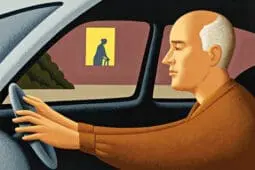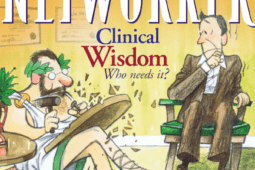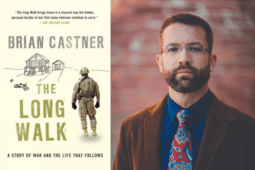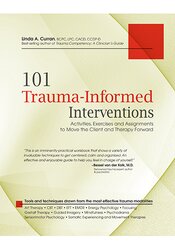The Realities of Combat, Military Culture & Treatment of PTSD in Veterans Returning Home
Presented by Bret A. Moore, Psy.D., ABPP Expert in military psychology, former Active Duty Army psychologist & best-selling author The myths and... Read more
Testing the Bond
What's family without shared identity?In an encyclopedic new book, Andrew Solomon explores how parents and children forge emotional bonds with one another in the presence of sometimes vast inborn... Read more
After the Anger
Learning to Love an Imperfect ParentA man entering his sixties discovers some peculiar markers that signal a retreat from old oppositional habits. Read more
Psychotherapy’s Mark Twain
For Frank Pittman, Self-Seriousness Was the One Unpardonable SinNetworker movie critic and contributor Frank Pittman delighted in pointing out the follies, foibles, and excesses of the therapy world, especially anything he... Read more
Sex, Lies, and the Long Road Back
Recovering from an Extramarital AffairHealing from an extramarital affair is rarely a simple process, especially when embarrassing sexual secrets and incompatibilities are exposed. Read more
Finding the Hero Within
Exploring the Link Between Trauma and OppressionKenneth Hardy believes that the experience of trauma is too often unacknowledged by therapists struggling to help troubled minority youth. Read more
Editor's Note: March/April 2013
What’s Wisdom Worth?The pioneers in our field—Sigmund Freud, Carl Jung, Virginia Satir, Fritz Perls, Salvador Minuchin, and others—all recognized that they were providing... Read more
The Many Faces Of Wisdom
Perspectives on Therapy’s QuestionsExcerpts from a series of interviews with some of the wisest souls in the field of psychology and psychotherapy on essential questions clinicians struggle with... Read more
Mentalization
Something New or Just Old Wine in New Bottles?Is “mentalization” a breakthrough in our understanding of the mind, or just a rehash of old ideas? Read more
Wisdom In Psychotherapy
Can We Afford It?It wasn’t their research results or bestselling books that set apart Freud, Rogers, Minuchin, and Satir. They seemed to have a sense of what really mattered... Read more
Suffering and the Quest for Wisdom
A Dark PassageThere’s something about healing from the deep emotional suffering that feels like death and rebirth—not the quick kind that some claim to receive in... Read more
Cultivating Your Creativity Can Make You More Effective
Creativity expert, Michael Gelb, on 4 simple practices that can help you become a better therapistActively cultivating creative power can be a revelation. It changes your brain, your outlook, your perception, and your problem-solving ability. Read more
VIDEO: Our Bottom Line Responsibility as Therapists
Rick Hanson on Working with the Brain for Lasting ChangePeople seek us out because they want change. Some want to be less anxious or less depressed, some want to be better able to control themselves in... Read more
Taming The Wild Things
Helping Anxious Kids and Their ParentsIn this age of helicopter parents and protective child professionals, we can often recreate a potent anxiety- reinforcing system around children that not only... Read more
Treating the Dissociative Child
The Road Back from the Ultimate Loss of SelfFew cases offer as eerie a therapeutic challenge as a suddenly noncommunicative child, lost in a dissociative shutdown. Read more
Driven Crazy
TBI is Claiming the Hearts and Minds of Too Many VetsWith the U.S. Army suicide rate at an all-time high, there’s a greater need than ever to understand the struggles of soldiers returning from war zones and... Read more
Sympathy For The Devil
Mendota, a Youth-Treatment of Last ResortThe word psychopath distinguishes hard-bitten predators. Research shows a treatment center—run by shrinks, not wardens—has reduced new violent offenses by... Read more
101 Trauma-Informed Interventions
"This is an imminently practical workbook that shows a variety of invaluable techniques to get centered, calm and organized. An effective and enjoyable... Read more
The Anxiety Game
It’s Rigged, so Let’s Change the RulesTherapists are supposed to make clients feel safe and secure, creating a cozy haven from a cruel world, right? Well, when it comes to treating anxiety, more... Read more
Therapy’s Nonverbal Dance
Are You in Step with Your Clients?Noticing a client’s nonverbal shifts isn’t enough. You must know what these shifts mean. Read more
The Power of Forgiveness
Cutting the Bonds of ResentfulnessFrederic Luskin has spent the last 20 years studying forgiveness and why achieving it can be so difficult. Read more
Editor's Note: January/February 2013
Fretting Over the AnxiousThrough our lives, most of us develop what can only be called a deeply personal relationship with our anxiety. There’s a good reason for this. A predilection... Read more
Living With The Devil We Know
We May be Anxious, but Not to ChangeAs therapists, we typically assume that a person suffering from severe anxiety is eager and motivated to receive the help we offer. But we should never naively... Read more
The Antipsychotic Epidemic
An alarming number of children and adolescents who walk into a psychiatrist’s office in the United States each year walk out with prescriptions for... Read more
Can Video Games Power Up Your Practice?
Wonder if Pac-Man and Ms. Pac-Man ever needed couples therapy? What might a family therapist say about the sibling rivalry of the Super Mario Bros? It’s... Read more
Dilemmas of the “Haveitall” Mom
A Young Mother Struggles with a New IdentityA young woman confronts the myths and dilemmas of motherhood. Read more
Treating the Anxious Client
New Directions for Psychotherapy’s Most Common ProblemExtra Feature Read more
Love Sense
The bestselling author of Hold Me Tight presents a revolutionary new understanding of why and how we love, based on cutting-edge research. Every day, we hear... Read more
Motivating the Resistant Male Client
Terry Real On Why Leverage Is Key With MenYou’ve probably worked with men who’ve been dragged, kicking and screaming, into therapy by their partners. But how do you work with a client who... Read more


























